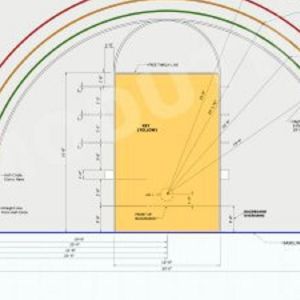Introduction to Grass PaversPosted by Hrithic on June 10th, 2023 Grass pavers have become an increasingly popular option for landscaping and outdoor construction projects in recent years. These interlocking pavers consist of a grid-like structure that allows grass or other vegetation to grow in between the gaps, resulting in a green, natural appearance that blends seamlessly with the surrounding environment. Grass pavers offer several benefits compared to traditional pavement materials, including improved drainage, reduced stormwater runoff, and increased soil stability. Types of Grass Pavers There are several different types of grass pavers available, each with its own unique set of features and advantages. Some of the most common types of grass pavers include: Plastic Grass Pavers Plastic grass pavers are made of high-density polyethylene (HDPE) and are designed to be lightweight, durable, and easy to install. The plastic material allows for a flexible design that can accommodate curves and slopes, making it ideal for landscaping projects. Concrete Grass Pavers Concrete grass pavers are made of a combination of cement and aggregates, and are known for their strength and durability. They are often used for heavy-duty applications, such as parking lots and driveways, and can support the weight of vehicles without damaging the underlying soil. Porcelain Grass Pavers Porcelain grass pavers are made of porcelain tiles that are laid over a gravel or sand base. They are extremely durable and resistant to wear and tear, making them ideal for high-traffic areas. They also offer a sleek, modern look that works well in contemporary outdoor spaces. Advantages of Grass Pavers There are several advantages to using grass pavers in landscaping and outdoor construction projects. Some of the most notable benefits include: Improved Drainage Grass pavers allow rainwater to soak into the ground, reducing the amount of runoff that can lead to erosion and flooding. This can also help to recharge groundwater reserves and prevent water pollution by filtering out pollutants and contaminants. Reduced Heat Island Effect Traditional pavement materials can contribute to the "heat island" effect, where urban areas become significantly warmer than surrounding rural areas due to a lack of vegetation and abundance of heat-absorbing surfaces. Grass pavers help to mitigate this effect by providing a natural, vegetative surface that absorbs heat and reduces overall temperatures. Increased Soil Stability Grass pavers help to hold soil in place, reducing the risk of erosion and sediment runoff. This can be especially important in areas prone to heavy rainfall or flooding. Green Aesthetics Perhaps the most obvious advantage of grass pavers is their ability to blend seamlessly into the surrounding landscape. By allowing grass or other vegetation to grow between the pavers, they provide a green, natural appearance that looks and feels like an extension of the natural environment. Applications of Grass Pavers Grass pavers can be used in a wide variety of landscaping and outdoor construction projects. Some of the most common applications include: Parking Lots and Driveways Grass pavers can be used to create durable, low-maintenance parking lots and driveways that provide a green, aesthetically pleasing surface. They can also help to reduce stormwater runoff and prevent erosion. Pedestrian Walkways Grass pavers can be used to create attractive, low-impact pedestrian walkways that blend in with the surrounding landscape. They provide a stable, slip-resistant surface that is easy to navigate and offers a natural, organic feel. Golf Course Pathways and Cart Paths Golf courses are often surrounded by beautiful natural landscapes, and grass pavers can be used to create pathways and cart paths that blend seamlessly into the environment. They provide a low-impact, non-invasive surface that allows golfers to enjoy the natural beauty of the course without damaging the underlying soil. Residential Landscaping Projects Grass pavers can be used in a wide variety of residential landscaping projects, including patios, walkways, and outdoor living spaces. They provide a natural, organic look that works well in both traditional and contemporary settings, and can help to reduce the amount of maintenance required to keep outdoor spaces looking their best. Installation and Maintenance Installation of grass pavers is relatively straightforward, but it's important to follow the manufacturer's instructions carefully in order to ensure a successful installation. Generally, the process involves excavating the existing soil to a depth of several inches, compacting the soil, and then laying a base layer of gravel or sand. The grass pavers are then laid on top of the base layer, with the gaps filled in with soil and seeded with grass or other vegetation. Maintenance of grass pavers is minimal, but it's important to keep the gaps between the pavers clear of debris in order to allow for proper drainage and prevent the growth of weeds. Regular mowing or trimming of the grass or vegetation can also help to keep the area looking neat and tidy. Conclusion Grass pavers offer a unique blend of aesthetic appeal, environmental benefits, and practical advantages that make them a popular choice for a wide variety of landscaping and outdoor construction projects. Whether you're looking to create a low-maintenance parking lot, a pedestrian walkway that blends seamlessly into the surrounding landscape, or an outdoor living space that looks and feels like a natural extension of your home, grass pavers are a versatile and reliable option that can help you achieve your goals. Like it? Share it!More by this author |


